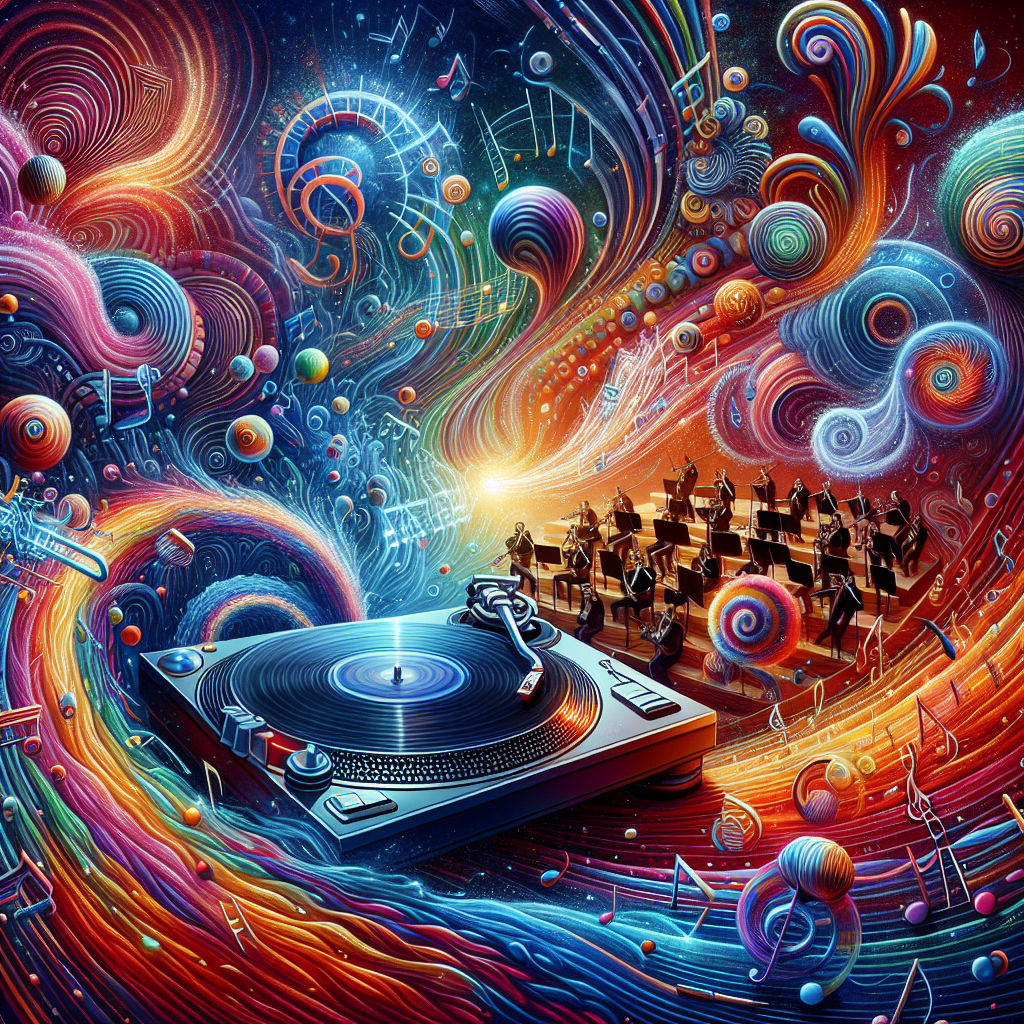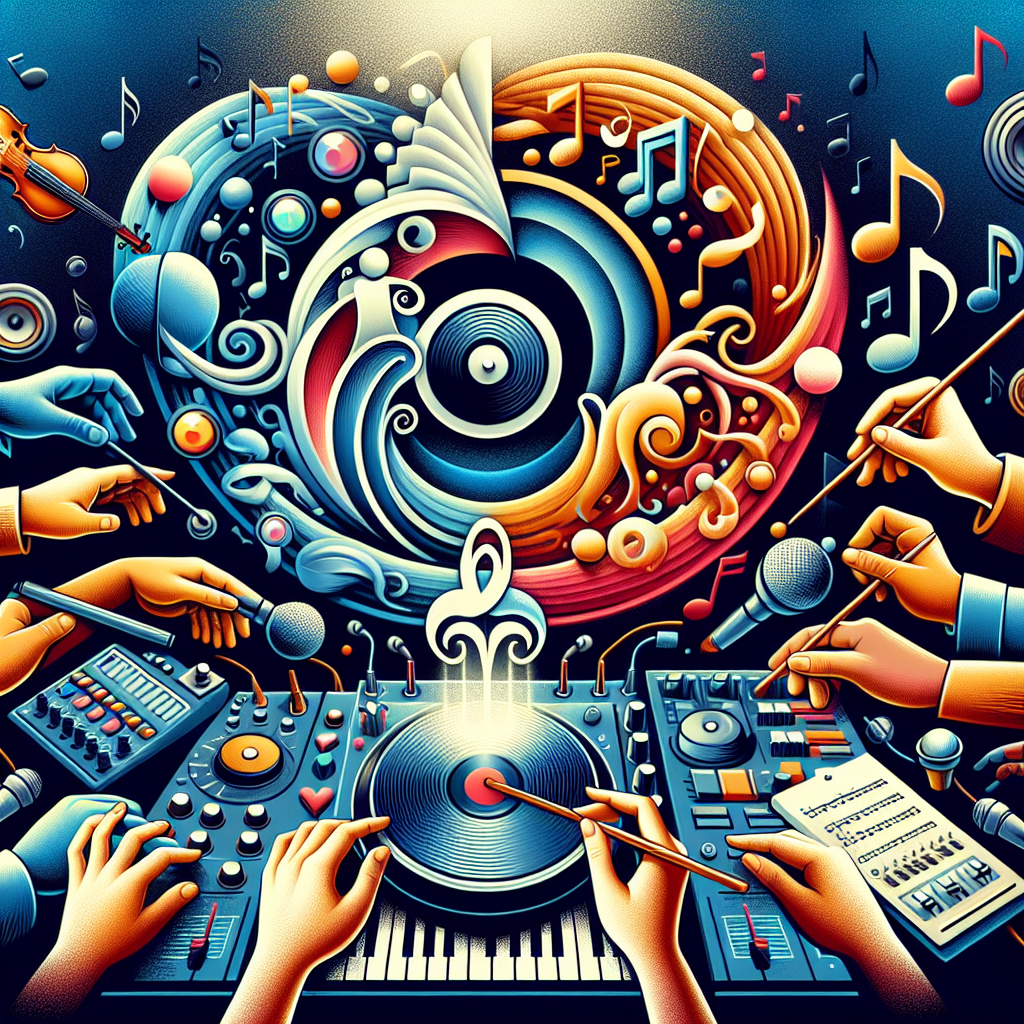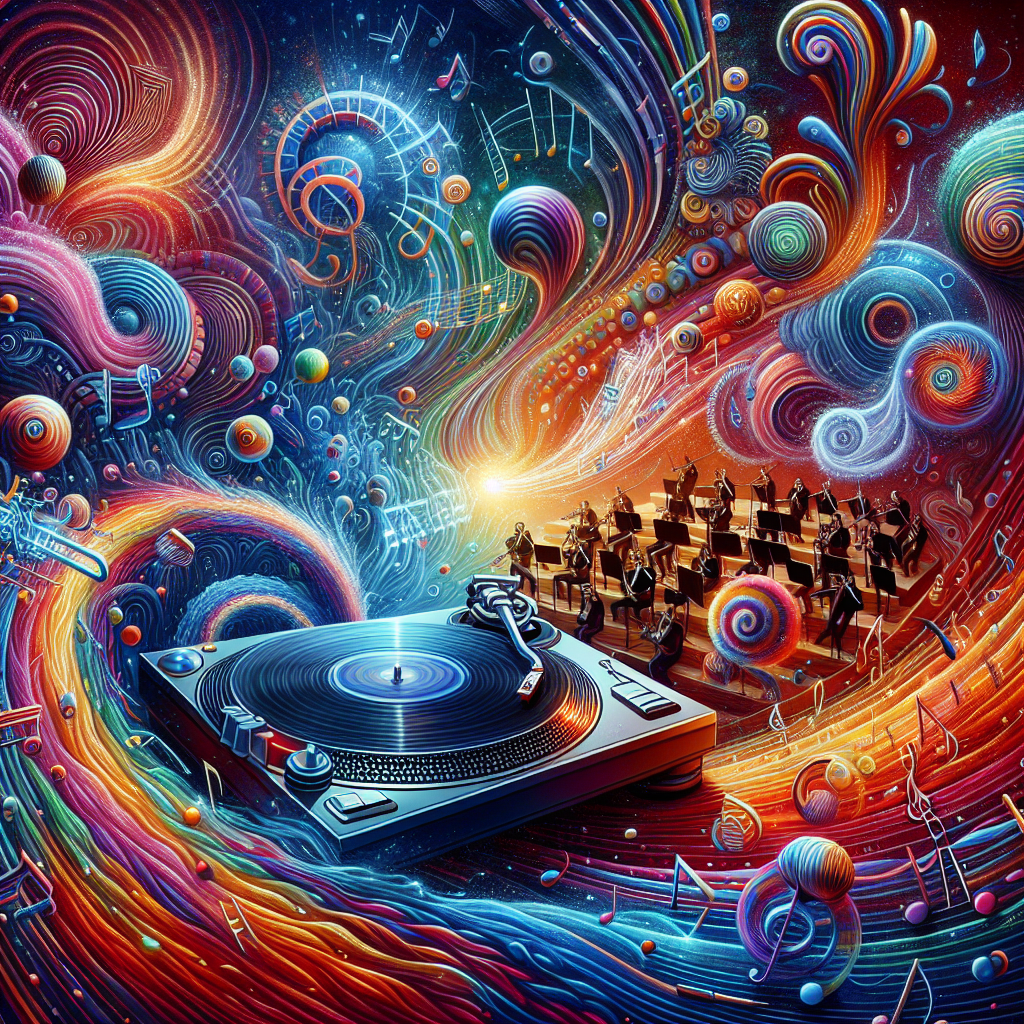
Imagine a world without music – no soothing melodies, no catchy beats, no heartfelt lyrics to sing along to. It would be unimaginable, right? Music is an integral part of our lives, constantly accompanying us through various emotions and experiences. But have you ever wondered what exactly goes into creating a music mix? What is it that makes certain songs flow seamlessly together, creating a harmonious journey for our ears? In this article, we will explore the intricate art of music mixing, unraveling its secrets and shedding light on the magic that lies behind those perfectly curated playlists. Get ready to embark on a sonic adventure like no other.

Definition of Music Mix
Music Mix: A Blend of Different Songs and Sounds
At its core, a music mix refers to the blending and combining of different songs and sounds to create a cohesive audio experience. It involves seamlessly transitioning between tracks, manipulating sounds, and applying various techniques to create a unique blend. Whether it’s a DJ mix, a remix, a mashup, or a compilation album, the art of music mixing revolves around the skillful arrangement and manipulation of musical elements.
The Art of Combining Different Musical Elements
Music mixing is a true art form that requires both technical expertise and creative vision. It involves selecting tracks that complement each other, harmonizing different musical elements, and creating a flow that takes the listener on a journey. Just like a painter uses different colors to create a masterpiece, a music mixer uses various songs, sounds, and techniques to craft a sonic tapestry that captivates the audience.
Purpose of Music Mix
Creating a Unique Sound Experience
One of the key purposes of a music mix is to create a unique sound experience for the audience. By blending different tracks and sounds, a mixer can take the listener on a sonic adventure that is unlike any individual song standing alone. The art of seamlessly transitioning between tracks and manipulating sounds allows the mixer to craft a cohesive and captivating journey for the listener’s ears.
Enhancing the Mood and Atmosphere
Music has the incredible power to evoke emotions and set the mood. A well-crafted music mix can enhance a specific mood or atmosphere in various settings, such as a party, a workout session, or a romantic evening. By carefully selecting tracks and applying appropriate mixing techniques, a mixer can create a playlist that matches the desired mood and takes the listeners on an emotional rollercoaster.
Introducing Variety and Contrast
Another purpose of a music mix is to introduce variety and contrast. Instead of listening to the same song for an entire duration, a mix brings together different musical genres, styles, and artists. This helps to keep the listener engaged and excited, as they experience the journey of multiple musical elements seamlessly blending into one another. The mix showcases the diversity of music and showcases the talents of the creator.
Showcasing DJ or Artist Skills
A music mix serves as a platform for DJs and artists to showcase their skills and creativity. A skilled DJ or mixer knows how to use beatmatching, EQ, transitions, and other techniques to create a cohesive and memorable mix. It becomes a representation of their taste, style, and ability to manipulate music in real-time. For artists, remixes and mashups allow them to put their unique spin on existing songs, highlighting their creativity and musicianship.
Entertainment and Enjoyment
Ultimately, the primary purpose of a music mix is to entertain and provide enjoyment to the listeners. Whether it’s an energetic mix to get the crowd on their feet, a soothing mix to unwind after a long day, or a nostalgic mix that brings back fond memories, music mixes are a source of joy and entertainment. They provide a form of escapism, allowing listeners to dive into a world of carefully curated music and experience moments of pure musical bliss.
Types of Music Mixes
DJ Mixes
One of the most common types of music mixes is the DJ mix. This involves a DJ seamlessly blending different tracks together, creating a continuous and cohesive journey of music. DJ mixes are often played at parties, clubs, and events. They showcase the DJ’s ability to read the crowd and curate a playlist that keeps everyone engaged and on their feet.
Remixes
Remixes are a form of music mix where an artist takes an existing song and adds their own creative spin to it. This could involve altering the tempo, rearranging the elements, or incorporating new sounds. Remixes often breathe new life into a song, introducing fresh perspectives and interpretations of the original material.
Mashups
Mashups involve combining elements of two or more songs to create a completely new composition. This is achieved by overlaying vocals, melodies, or rhythms from different tracks to create a harmonious blend. Mashups are known for their inventive and unexpected combinations, resulting in unique musical creations that can surprise and captivate the listener.
Compilation Albums
Compilation albums are curated collections of different songs from various artists or genres. These albums often follow a specific theme or concept, providing listeners with a diverse range of music within a single package. Compilation albums are popular among music lovers who enjoy discovering new artists or exploring different styles of music.
Live Mixes
Live mixes are recordings of a DJ’s performance during a live event or show. These mixes capture the energy and atmosphere of the live setting, providing listeners with an authentic and immersive experience. Live mixes are often shared online or released as albums, allowing fans to relive the thrill of a live performance anytime, anywhere.
Techniques Used in Music Mixing
Beatmatching and Tempo Control
Beatmatching is a fundamental technique in music mixing that involves aligning the beats of two tracks to create a seamless transition. DJs use beatmatching to sync the tempos of different songs, ensuring a smooth flow between them. This technique allows the mixer to maintain a consistent rhythm and energy throughout the mix.
EQ and Frequency Control
Equalization (EQ) and frequency control are essential tools for shaping and balancing the sound in a music mix. By adjusting the levels of different frequencies (bass, midrange, and treble), a mixer can enhance or diminish certain elements of a track. EQ helps to create a sense of clarity and depth, ensuring that each element in the mix is audible and well-balanced.
Crossfading and Transitions
Crossfading is the technique of smoothly blending the end of one track with the beginning of another, creating a seamless transition between the two. Transitions can be achieved using various methods, such as gradual volume adjustments, applying effects, or using specialized DJ equipment. The goal is to avoid abrupt changes and maintain a consistent flow throughout the mix.
Effect Processing
Effect processing involves using audio effects, such as reverb, delay, and distortion, to enhance or alter the sound of a track. Effects can be applied to individual tracks or used during transitions to add a creative touch to the mix. Effect processing allows mixers to experiment and create unique sonic textures that elevate the overall listening experience.
Track Selection and Ordering
One of the vital techniques in music mixing is selecting the right tracks and organizing them in a logical and compelling order. A well-curated playlist takes into consideration factors like the energy level, mood, and musical compatibility of each track. By strategically arranging tracks, a mixer can create a narrative or emotional arc that engages the listener from start to finish.

Popular Music Mixing Software and Equipment
Digital Audio Workstations (DAWs)
Digital Audio Workstations (DAWs) are software applications used for recording, editing, and mixing audio. They provide a wide range of tools and features to assist mixers in creating and manipulating music. Popular DAWs include Ableton Live, FL Studio, Logic Pro, and Pro Tools.
DJ Controllers
DJ controllers are hardware devices that allow DJs to control and manipulate tracks using physical knobs, buttons, and jog wheels. These controllers often interface with DJ software, providing the DJ with tactile control over different mixing parameters. DJ controllers come in various sizes and configurations, catering to different preferences and skill levels.
Mixer Boards
Mixer boards, also known as mixing consoles or audio mixers, are devices used to adjust and combine audio signals from multiple sources. They provide control over volume levels, EQ, and various other mixing parameters. Mixer boards are commonly used in recording studios, live venues, and DJ setups.
Turntables and Vinyl
Turntables and vinyl have played a significant role in the history of music mixing. DJs and mixers use vinyl records to create mixes, manually manipulating the rotation speed, and using the physical form of the records to perform creative techniques. The resurgence of vinyl in recent years has brought about a renewed interest in the unique sound and tactile experience it offers.
Studio Monitors and Headphones
Studio monitors and headphones are critical tools in the music mixing process. They are designed to provide accurate and detailed sound reproduction, allowing mixers to make precise adjustments and evaluate the quality of the mix. Studio monitors provide a flat frequency response, while headphones offer a more isolated listening experience.
Steps to Create a Music Mix
Choosing a Theme or Concept
The first step in creating a music mix is deciding on a theme or concept. This could be based on a particular genre, mood, or event. Choosing a theme helps provide direction and coherence to the mix, ensuring a consistent message or atmosphere throughout.
Selecting and Preparing Tracks
Once the theme is established, the next step is to select and prepare the tracks that will be included in the mix. This involves finding songs that align with the theme and creating a playlist. It’s essential to consider factors like genre, tempo, energy, and musical compatibility when choosing tracks.
Organizing and Sequencing
After selecting the tracks, they need to be organized and sequenced in a logical and compelling order. This involves considering factors like transitions, energy flow, and narrative structure. A well-sequenced mix keeps the listener engaged from start to finish, taking them on a journey that builds and evolves.
Applying Mixing Techniques
Once the tracks are organized, it’s time to apply various mixing techniques to create a cohesive blend. This includes beatmatching, EQ adjustments, crossfading, and applying effects. The goal is to create smooth transitions between tracks and enhance the overall listening experience.
Testing and Adjusting
After the initial mixing is done, it’s important to test the mix and make adjustments as needed. This involves listening to the mix in various environments and playback systems to ensure the sound translates well. Testing allows for fine-tuning and addressing any potential issues in the mix.
Finalizing and Exporting
Once the mix is perfected, the final step is to export it in the desired audio format. This could involve creating a high-quality audio file or preparing the mix for a specific platform, such as a streaming service or a CD. Ensuring proper levels, file formats, and metadata is essential for a professional and polished final product.
Copyright and Legal Considerations in Music Mixing
Understanding Copyright Laws
When creating a music mix, it’s important to have a basic understanding of copyright laws. Mixing copyrighted music without proper permission or licensing can lead to legal consequences. It’s crucial to respect and adhere to copyright laws to ensure that artists’ intellectual property rights are protected.
Using Licensed or Royalty-Free Tracks
To avoid copyright issues, using licensed or royalty-free tracks is a good option. Licensed tracks are obtained through proper channels, such as purchasing licenses from record labels or digital platforms. Royalty-free tracks are those that can be used without the need for individual licensing, often available through specific libraries or websites.
Obtaining Proper Permissions and Clearances
In some cases, mixers may want to use samples or remixes of copyrighted material. In such situations, it’s necessary to obtain proper permissions and clearances from the original copyright holders. This involves contacting the relevant parties, negotiating terms, and obtaining proper licenses or agreements.
Avoiding Unauthorized Distribution
Once a music mix is created, it’s important to be mindful of how it’s shared and distributed. Unauthorized distribution, such as uploading the mix to unauthorized platforms or making it available for download without permission, can infringe upon copyright laws. It’s essential to respect the rights of the original artists and comply with legal distribution channels.
Promoting and Sharing Music Mixes
Platforms for Sharing
There are various platforms available for sharing and promoting music mixes. These include popular streaming services like SoundCloud, Mixcloud, and YouTube, as well as social media platforms like Instagram, Facebook, and Twitter. Choosing the right platform depends on the intended audience and the goals of the mixer.
Creating Attractive Cover Art
Creating visually appealing cover art is essential for attracting listeners and making the mix stand out. Eye-catching and well-designed cover art can pique interest and give potential listeners a glimpse into the mood or theme of the mix. It’s important to create cover art that is consistent with the overall aesthetic and message of the mix.
Writing Engaging Tracklists and Descriptions
Accompanying the mix with an engaging tracklist and descriptions can help provide context and entice listeners. Descriptions can include information about the theme, the inspiration behind the mix, or any unique elements or techniques used. A well-crafted tracklist can create anticipation and give listeners a preview of the journey they are about to embark on.
Using Social Media and Online Communities
Leveraging social media and online communities is an effective way to promote music mixes and reach a wider audience. Sharing the mix on platforms like Instagram, Facebook, or Twitter allows for easy distribution and engagement with potential listeners. Engaging with online communities, such as music forums or artist collectives, can also help in building a supportive network and gaining exposure.
Engaging with the Audience and Seeking Feedback
Engaging with the audience and seeking feedback is crucial for the growth and improvement of a mixer. Encouraging listeners to share their thoughts, comments, and suggestions creates a sense of community and allows for an ongoing dialogue. Feedback helps in refining future mixes and understanding the preferences and tastes of the audience.
Impact and Influence of Music Mixes
Shaping Musical Trends and Genres
Music mixes have the power to shape and influence musical trends and genres. DJs and mixers often introduce new tracks, sounds, or styles to audiences, sparking interest and potentially leading to the growth of a particular genre or movement. By pushing boundaries and highlighting fresh and innovative music, music mixes contribute to the evolution of the musical landscape.
Expanding Artists’ Fanbases
Incorporating tracks from different artists in a mix exposes listeners to new and undiscovered talent. A well-received mix can help in expanding artists’ fanbases, introducing their music to a broader audience. Mixers often collaborate with emerging artists or promote tracks from lesser-known musicians, providing them with an opportunity to gain exposure and recognition.
Showcasing New and Undiscovered Talent
Music mixes are a platform for DJs, mixers, and artists to showcase new and undiscovered talent. By featuring tracks from up-and-coming artists, a mix can provide a platform for exposure and recognition. This helps foster a dynamic and diverse music scene, allowing fresh and innovative voices to be heard and appreciated.
Creating Unique Listening Experiences
One of the unique aspects of music mixes is the ability to provide listeners with a curated and immersive listening experience. A well-crafted mix takes the listener on a journey, introducing them to a variety of sounds, moods, and emotions. By creating a cohesive narrative and flow, a mix can transport the audience to different sonic landscapes, creating moments of musical magic.
Evoking Emotions and Memories
Music has an incredible ability to evoke emotions and trigger memories. A music mix, with its carefully selected tracks and moments of contrast and connection, can evoke a wide range of emotions in listeners. From nostalgia and joy to introspection and excitement, a well-curated mix can create a deeply personal and emotional experience for the listener.
Promoting Dance and Nightclub Culture
Music mixes have long been synonymous with dance and nightclub culture. DJs and mixers play a vital role in providing the soundtrack to nights of dancing and celebration. By creating mixes that are designed to energize and engage the crowd, mixers contribute to the vibrant and immersive experience of the dance floor.
Conclusion
Music mixes are a powerful tool, blending different songs and sounds to create a unique and immersive audio experience. Whether it’s a DJ mix, a remix, or a compilation album, the art of music mixing allows for creativity, self-expression, and the creation of memorable sonic journeys. By understanding the purpose, techniques, and impact of music mixes, both listeners and creators can fully appreciate the art form and its ability to evoke emotions, shape trends, and bring joy to people around the world.
